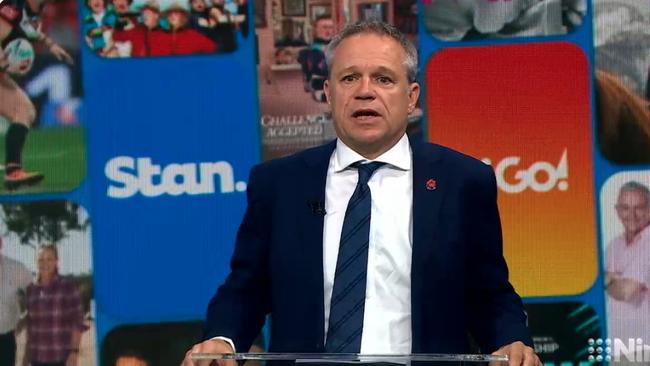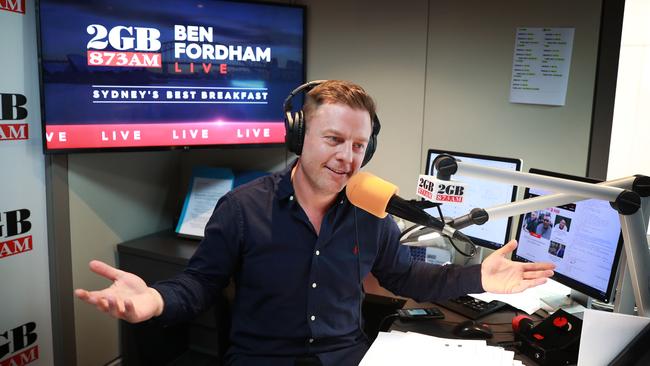Buyers lining up for Nine Radio, but is parent company selling?
The possible sale of Nine Radio has been the subject of industry chatter, and the speculation intensified when interim CEO Matt Stanton spoke of the need to streamline the organisation’s assets.

The continuing uncertainty surrounding Nine Entertainment’s leadership is hampering the media company’s moves to offload its audio business, with potential buyers expressing doubt about whether the sale will proceed.
With assets including the country’s two most popular talkback radio stations, 2GB and 3AW, the possible sale of Nine Radio has been the subject of months of industry chatter.
The speculation intensified last month when the company’s interim chief executive, Matt Stanton, spoke of the need to streamline the organisation’s assets.
Mr Stanton said the Nine group was going to “refresh its operating model to more effectively leverage its portfolio of premium media assets, simplify business operations, reduce duplication, and provide greater accountability”.
Of Nine’s core assets – television, audio, streaming, digital and print publishing business – the radio-led division is most likely to be put up for possible sale.
But The Australian has been told the drawn-out process to appoint Nine’s next CEO has stymied discussions.
Mr Stanton has been acting in the role since September 30.
One interested party, who asked not to be named, said: “There is currently no one for potential buyers to speak with.
“Nine needs a CEO with a clear path forward.
“There’s a lot going on (in the market), and not a lot going on (inside Nine).”
Another stumbling block to a potential sale is that many advertisers aren’t attracted to talkback radio’s ageing audience, because of the challenges in making money from that demographic group.
In Sydney, for example, 2GB is the most listened-to station among the 65+ age group but there are higher-rating commercial alternatives in other age demographics.
In Melbourne, 3AW narrowly leads in the 55-64 sector, and is a runaway leader in the over-65s.
In addition to its presence in the largest markets of Sydney and Melbourne, Nine Radio also has a strong footprint in Brisbane and Perth, with 4BC and 6PR, respectively.
One well-placed media executive told The Australian last week that Nine would want about $50m-$60m for its radio business, even though on paper they might only be “worth about $30m”.
In terms of its value to the overall business, radio is an outlier in the Nine portfolio.
FY24 total radio division revenue was $103.3m; its EBITDA (earnings before interest, taxes, depreciation, and amortisation) of $8.4m was down 33 per cent, year on year.
That figure is dwarfed by Nine’s other divisions – television revenue of $1.13bn (EBITDA $208.3m), Stan $447.7m (EBITDA $46.0m) and publishing $558.6m (EBITDA $152.6m).
Nine’s group EBITDA for FY24 was $517.4m.

Speculation about potential buyers has ranged from Australia’s richest person Gina Rinehart to former politician Joe Hockey, whose Bondi Partners consultancy firm boasts that it looks to “find commercial opportunities in challenging environments”.
Craig Hutchison’s Sports Entertainment Group, which operates SENTrack stations around Australia, could be a contender, while Seven West Media, which has a 20 per cent holding in ARN, may also make a play for Nine Radio, if the price is right. Nine Radio would offer many more synergies than Seven currently gets out of ARN.
A number of private equity players could be interested in building a media group including radio, while Australian Digital Holdings, the Alan Jones-backed business which is launching Newsmax in Australia, is believed to be in market looking for backers for several other media plays.
A Nine spokesman told The Australian: “We don’t comment on market speculation.”
Sydney radio station 2GB is more often than not the city’s No.1 breakfast radio station when measured by share of audience.
Its breakfast program, hosted by Ben Fordham, recorded a 15.1 per cent slice of the market in the final survey of 2024.
Melbourne’s 3AW has an even better record – it has been the city’s most popular station for many years.
In the final survey of last year, its breakfast show, fronted by Ross Stevenson and Russel Howcroft, enjoyed a 20 per cent share.
The Australian recently reported on former 6PR announcer Gary Adshead revealing plans to convert 6PR to a music format.
That didn’t eventuate, with Nine instead cutting costs, but keeping the news/talk format.
Fordham is the face of 2GB in Sydney.
At 48, he finds himself leading a team of relative youngsters across 2GB’s team of presenters, with the exception of night-time veterans John Stanley and Mike Jeffries.
“I find myself almost overnight as an older broadcaster interviewing a younger premier and ministers,” Fordham said.
But he said the audience had quickly warmed to station’s younger line-up, which was disrupted at the end of last year with the departures of Ray Hadley and Chris O’Keefe.
“Mark Levy is one of the most versatile broadcasters going around. He’s a perfect fit for Ray Hadley’s show,” he said, adding that 2GB’s new afternoon hosts Michael McLaren and drive presenter Clinton Maynard were also performing well.
When asked if Nine undervalues the contribution of its radio division, Fordham said: “I don’t think so. I think it’s a high-profile part of the business, and influential part of the business and a popular part of the business too.”
As to Fordham’s own value to the radio division, he’s happy with that too, even though ARN pays its Sydney and Melbourne KIIS breakfast hosts Kyle and Jackie O a combined $20m a year.
“What did I think when I heard about the mega-deal for Kyle and Jackie? Good luck to them. When I heard it was for 10 years, I thought to myself that’s going to be problematic, that’s a long time,” he said.
“If you’re suggesting that I should get a pay rise, I recommend you take that up with (Nine Radio MD) Tom Malone.”






To join the conversation, please log in. Don't have an account? Register
Join the conversation, you are commenting as Logout